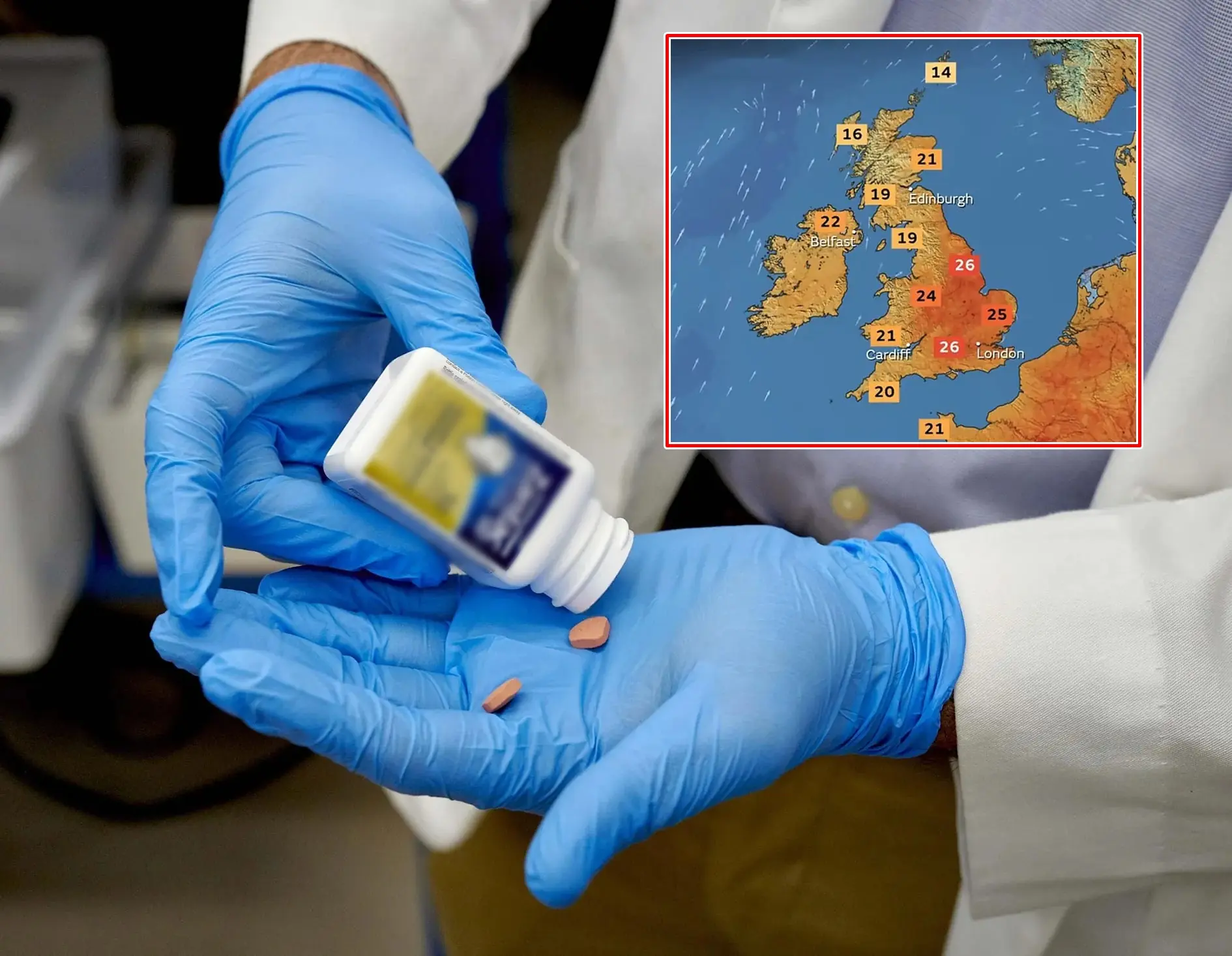
Warning over common over-the-counter drug that can fuel cancer in warm weather
It is crucial for individuals taking these medications to be aware of the potential risks and to take appropriate steps to protect their skin from harmful UV radiation.
Northwestern University scientists have developed a groundbreaking bioactive material that successfully regenerates high-quality cartilage in knee joints, offering potential treatments for osteoarthritis and joint injuries.
Introduction:
Cartilage, a vital component in joints, plays a crucial role in facilitating smooth and pain-free movement. However, once damaged, cartilage has limited capacity to heal naturally, leading to conditions like osteoarthritis and often necessitating joint replacement surgeries. In a significant advancement, researchers at Northwestern University have developed a novel bioactive material capable of regenerating high-quality cartilage in knee joints, as demonstrated in a large-animal model.
Development of the Bioactive Material:
The innovative material comprises two primary components: a bioactive peptide that binds to transforming growth factor beta-1 (TGFβ-1)—a protein essential for cartilage growth and maintenance—and modified hyaluronic acid, a natural polysaccharide present in cartilage and synovial fluid. By integrating these components, the researchers created a complex network of molecular structures that mimic the natural environment of cartilage, facilitating its regeneration.
"We chose hyaluronic acid because it resembles the natural polymers found in cartilage," said Samuel I. Stupp, the study's lead researcher and a pioneer in regenerative nanomedicine. "This material acts as a scaffold, encouraging the body's own cells to regenerate cartilage tissue."
 \
\
Preclinical Testing and Results:
To evaluate the material's efficacy, the researchers tested it in sheep with cartilage defects in the stifle joint, a complex joint in the hind limbs similar to the human knee. The material was injected into the cartilage defects, where it transformed into a rubbery matrix. Within six months, the researchers observed the growth of new cartilage containing natural biopolymers such as collagen II and proteoglycans, which are essential for pain-free mechanical resilience in joints.
"A study on a sheep model is more predictive of how the treatment will work in humans," Stupp noted. "Sheep cartilage is stubborn and incredibly difficult to regenerate, making them an ideal model for testing cartilage repair strategies."
Potential Clinical Applications:
This bioactive material holds promise for various clinical applications, including:
Preventing Knee Replacement Surgeries: By regenerating hyaline cartilage, the material could reduce the need for invasive joint replacement procedures.
Treating Osteoarthritis: The material offers a potential treatment for osteoarthritis by promoting the regeneration of damaged cartilage.
Repairing Sports-Related Injuries: The material could aid in repairing cartilage damaged due to sports-related injuries, such as ACL tears.
"Our new therapy can induce repair in a tissue that does not naturally regenerate," Stupp emphasized. "We think our treatment could help address a serious, unmet clinical need."
Future Directions:
The researchers aim to further develop this bioactive material for clinical use. Future studies will focus on optimizing the material's properties and conducting human clinical trials to assess its safety and efficacy. If successful, this approach could revolutionize the treatment of cartilage-related joint disorders and significantly improve patient outcomes.
Conclusion:
The development of this novel bioactive material represents a significant step forward in regenerative medicine. By successfully regenerating high-quality cartilage in knee joints, this material offers hope for individuals suffering from cartilage damage due to conditions like osteoarthritis and joint injuries. With continued research and development, it holds the potential to transform the landscape of joint repair and regeneration.

It is crucial for individuals taking these medications to be aware of the potential risks and to take appropriate steps to protect their skin from harmful UV radiation.

Instead of relying on sleep aids or medications, individuals may be able to improve their sleep naturally by making small, sustainable changes to their diet.

With the rising temperatures and the potential for bacteria growth in the heat, it’s essential to adjust your food storage practices to ensure your meals remain safe and enjoyable.

While protein shakes have become a staple for many individuals looking to maintain muscle mass or lose weight, recent research suggests that these seemingly innocent supplements may pose significant risks to long-term health.



While many of these foods may be considered indulgent or "fancy," the risks they pose are very real and can have life-threatening consequences.












A groundbreaking app, Circadian AI, developed by a 14-year-old, uses machine learning to analyze heart sounds and detect early signs of heart disease with 96% accuracy in just seven seconds.

Mary's inspiring story of overcoming a turbulent childhood, discovering her roots, and finding love and happiness. A tale of resilience, self-discovery, and the power of family.

At 100, Layne Horwich faced bre@st canc3r with bravery. Learn how her active lifestyle, strong will, and a decision to undergo surgery helped her beat canc3r and inspire others to prioritize their health.

Inspired by Sandra Bullock's profound wisdom, this piece explores the power of choosing peace over retaliation. Learn how empathy, silent strength, and the courage to move forward define true resilience and foster personal growth in the face of disrespect

Mason Wartman’s Rosa’s Fresh Pizza turned $1 slices into a kindness movement. Read his story! ❤️🍕

Discover the history and beauty of Hàng Trống paintings, one of Vietnam's three most iconic folk art traditions. Learn about its cultural significance and lasting impact, showcased through the eyes of an artisan at work.

Ada Blackjack survived alone in the Arctic for two years, a forgotten hero. Discover her incredible story! ❤️❄️

Found tied up and heartbroken, one dog's life changed forever. Discover his journey from abandonment to a loving home, a powerful story of rescue, unconditional love, and the profound joy of giving a second chance to a deserving soul.

Discover the incredible journey of a family from hardship to success. From being placed in a Catholic orphanage to serving in WWII, this family's resilience and love for each other became their strength.

It is crucial for individuals taking these medications to be aware of the potential risks and to take appropriate steps to protect their skin from harmful UV radiation.

A wealthy father goes undercover as a poor man to test the sincerity of his son’s fiancée and her wealthy parents. Tension builds as the family tries to humiliate him, but an unexpected revelation leaves everyone speechless.

After being unfairly blamed for a mess at the office, Valya finds an unexpected ally in her office rival, Marianna. Together, they confront the CEO, and Valya learns the power of standing up for herself. A story of empowerment, confrontation, and self-wor

Instead of relying on sleep aids or medications, individuals may be able to improve their sleep naturally by making small, sustainable changes to their diet.

Lonely pensioner, Brenda, has spent most of her life providing shelter cats with a forever home. When her newest pet, Lucky, starts bringing home dollar bills, Wendy quickly realizes something suspicious is happening in her neighborhood.

With the rising temperatures and the potential for bacteria growth in the heat, it’s essential to adjust your food storage practices to ensure your meals remain safe and enjoyable.

While protein shakes have become a staple for many individuals looking to maintain muscle mass or lose weight, recent research suggests that these seemingly innocent supplements may pose significant risks to long-term health.



A strange sound from the bathroom on a cross-country flight gives flight attendant Lenna a terrible fright. Little does she realize that the kid inside will forever change her life.

While many of these foods may be considered indulgent or "fancy," the risks they pose are very real and can have life-threatening consequences.
